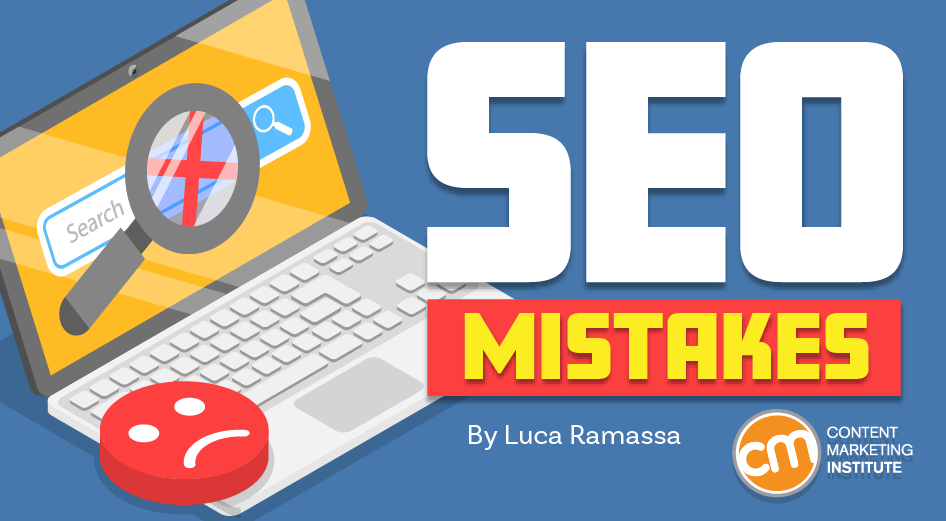A properly optimized website supercharges a content marketing program.
The home for your content assets can build your brand’s authority with search engines and help you capture new leads. It could even turn into an automated sales machine.
But here’s the problem: Many factors go into website content optimization, and many get ignored, forgotten, or dismissed.
Let’s consider six elements that don’t always get the proper attention. Addressing them will help turn your website into a profitable powerhouse.
Mistake 1: Not optimizing for mobile first
Think about these two stats: In 2022, over 92% of global users accessed the internet via mobile phones, and only about 66% accessed the internet using laptops or desktops.
It’s a mobile-first world, so why not optimize for mobile over desktop devices? Here are some ideas on how to do that:
- Design your site for mobile, then make sure it adapts to other devices instead of designing for desktop first.
- Use short meta titles and descriptions because they’re easier to digest on mobile.
- Avoid pop-ups, or at least make sure they don’t cover important content.
Mistake 2: Ignore website performance
In 2023, site visitors have zero patience for slow, lagging, or ill-performing websites. So make sure your website team conducts routine speed checks.
You can use a free tool like Google’s PageSpeed Insights, which provides a score based on the site’s performance, accessibility, use of best practices, and SEO. It also lets you pull your Web Vitals report from Google.

Fix any problems the tool identifies, some of which may require the help of a developer. Whoever helps fix the bugs also should be well versed in Google’s Web Vitals initiative and tackling potential problems around loading experience, interactivity, and visual stability of page content.
Mistake 3: Forgetting to optimize images and titles
Failing to optimize images and titles creates a major accessibility issue for people who rely on screen readers and text-only browsers. It also means your content won’t “speak” well so search engines can understand the content.
To optimize the text-related elements around your content:
- Ensure every page – and content asset – contains a meta title and meta description incorporating the targeted keyword.
- Include an alt title and alt description for all image and video media. If relevant, include your target keyword in both, but make sure to describe what’s in the media.
- Create a distinct URL for all content assets (i.e., blog posts, gated resources) and include the target keyword.
Mistake 4: Designing without considering the user experience
From the moment they land on your site, visitors should feel comfortable navigating it. While the look matters, the site map should have an intuitive layout with category tabs placed where they make the most functional sense.
To create a high-quality user experience:
- Tailor your website copy, visuals, and aesthetics to your ideal audience.
- Add trust elements such as accolades, stats, testimonials, and experience to build credibility.
- Present tailored solutions to your target audience’s core pain points.
- Test your website from the user experience often to make sure it feels intuitive.
- If you collect pertinent user data through cookies to allow for a hyper-personalized site, don’t forget to include a cookie consent banner and stay up-to-date on all compliance laws.
- Use Lighthouse, an open-source, automated tool, to gain further insights on improving page quality.
- Add a feedback form to your website and encourage users to provide constructive criticism, so you can improve their experience.
Mistake 5: Not having a solid website architecture
Wondering why Google hasn’t indexed your site? The culprit might be your website architecture.
While identifying and fixing the problems, work with a developer who’s well-versed in SEO and knows how to build an SEO-friendly site architecture. Google’s Matt Cutts gives a helpful overview of how it all works together:
To get found by Google, you should:
- Make your website crawlable by search engines as facilitated by Google Caffeine (its indexing tools)
- Submit your XML sitemap through Google Search Console and fix any identified problems.
- Use Google’s robot.txt to indicate which URLs should be crawled.
- Spot and fix broken links.
- Check and correct status code errors.
- Audit your content assets and improve or prune underperforming pieces.
- Fix redirect chains.
- Add relevant internal links with descriptive anchor text to web pages and content assets.
- Update duplicate metadata.
Mistake 6: Not optimizing content assets for search
When you publish content, you should have a search intent strategy behind it.
To maximize your content’s on-site optimization:
- Organize your content in dedicated hubs and include all your assets – blog articles, white papers, case studies, etc. – around that topic. Create a “resource” tab under which these hubs are housed.
- Create topic clusters within the hubs with the related subject matter. Include relevant links to parent and child pages and maintain site architecture integrity.
- Identify and target keyword phrases for each web page and content asset on your website.
- Place target and secondary keywords naturally and strategically throughout your pages and assets.
End the mistakes and begin SEO success
When you know what to avoid and what to include, your website can attract more visitors, leads, and customers.
But it all starts with avoiding common mistakes, such as not focusing on mobile and failing to prepare the site and content to attract search engines. Ready to start?
All tools mentioned in this article were suggested by the author. If you’d like to suggest a tool, share the article on social media with a comment.
HANDPICKED RELATED CONTENT:
- 6 SEO Content Mistakes, Myths, and Misunderstandings To Rethink This Year
- 13 Great Tools to Put Your Website Load Time in the Fast Lane
- 6 Simple Things You Can Do To Improve the Content Experience for Readers
- A Simple-to-Do Content Audit With 6 Questions
Cover image by Joseph Kalinowski/Content Marketing Institute

